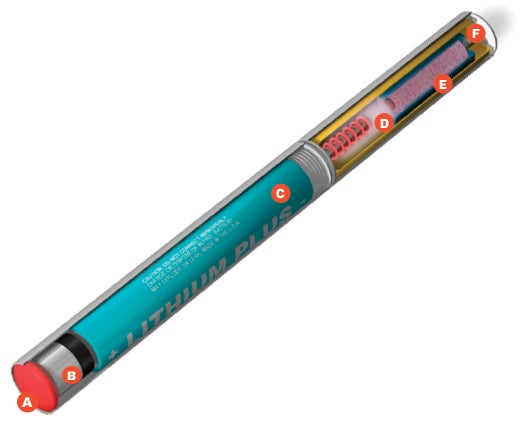How It Works: An Electronic Cigarette
The future of smoking

Since electronic cigarettes hit the market in 2007, yearly sales have reached $1 billion in the U.S. Although they’re popular, it’s still unclear how safe they are. Last year, a study from an international group of scientists showed that the toxins in e-cigarette vapor are 9 to 450 times lower than in tobacco smoke. The Food and Drug Administration is still determining its regulatory stance. It’s sponsoring more research while sorting out its position.

A. LED
When the e-cigarette is active, an indicator light glows like a tobacco ember.
B. Sensor
Some versions have a pressure sensor that detects the airflow of an inhalation. The sensor then turns on the battery, which triggers the heating element. Other e-cigarettes are turned on and off with a button.
C. Battery
A slim lithium-ion battery, usually rechargeable, provides the power. An average e-cigarette has about 300 puffs per charge.
D. Heating Element
Electricity passes through a resistant material—usually metal or ceramic—which produces heat. Once the heating element reaches approximately 150°F, it vaporizes about 0.005 milliliters of the nicotine liquid into a mist. Each hit has roughly 90 percent of the nicotine found in a tobacco-cigarette puff.
E. Nicotine Liquid
A viscous fluid made from propylene glycol, vegetable glycerin, or a mixture of both, contains about 1 percent nicotine and flavoring such as menthol, fruit, or classic tobacco.
F. Mouthpiece
A flexible tip, sometimes made of silicone, evokes the feel of a real cigarette.
Continue reading about How It Works: a Wiffle ball, a surgical snakebot, and more
This article originally appeared in the April 2014 issue of Popular Science.